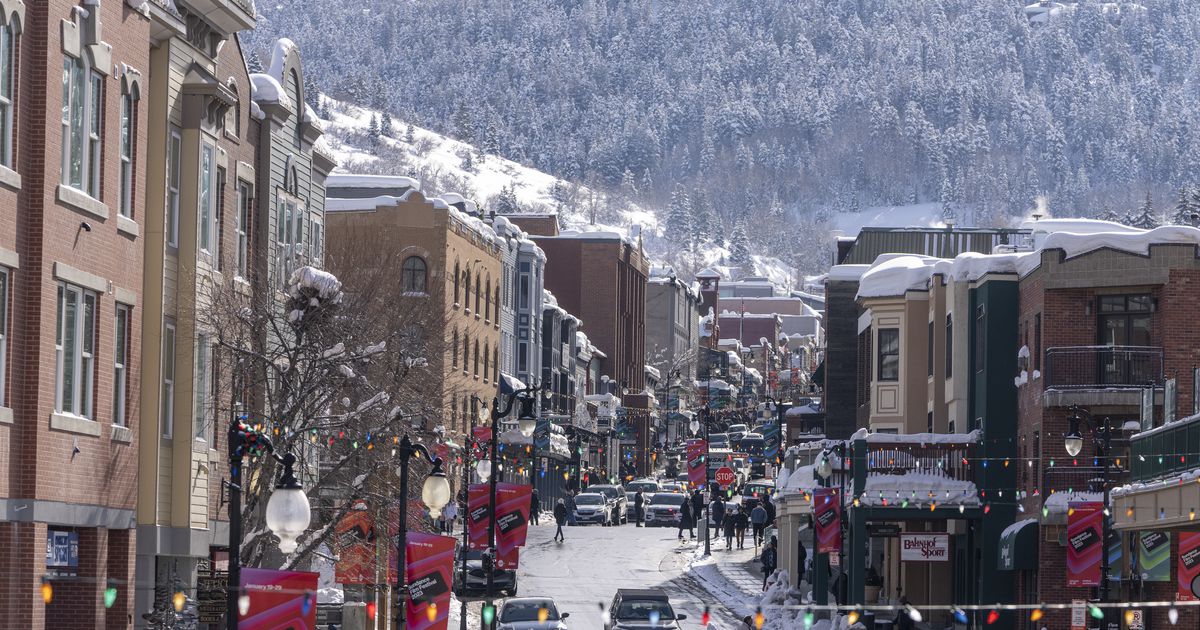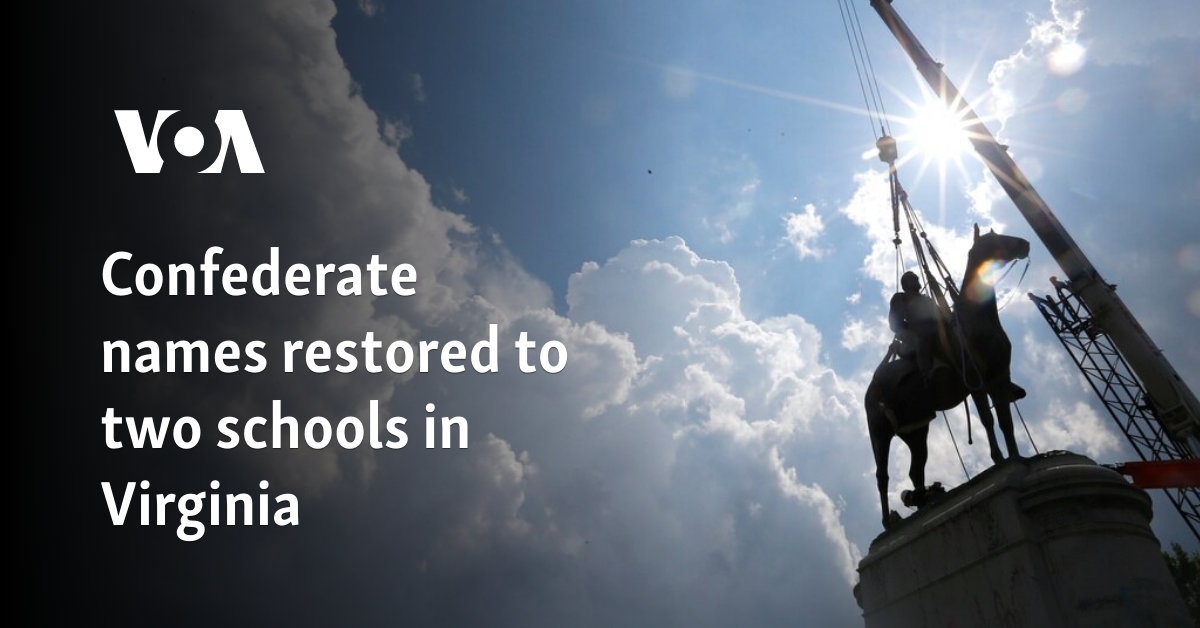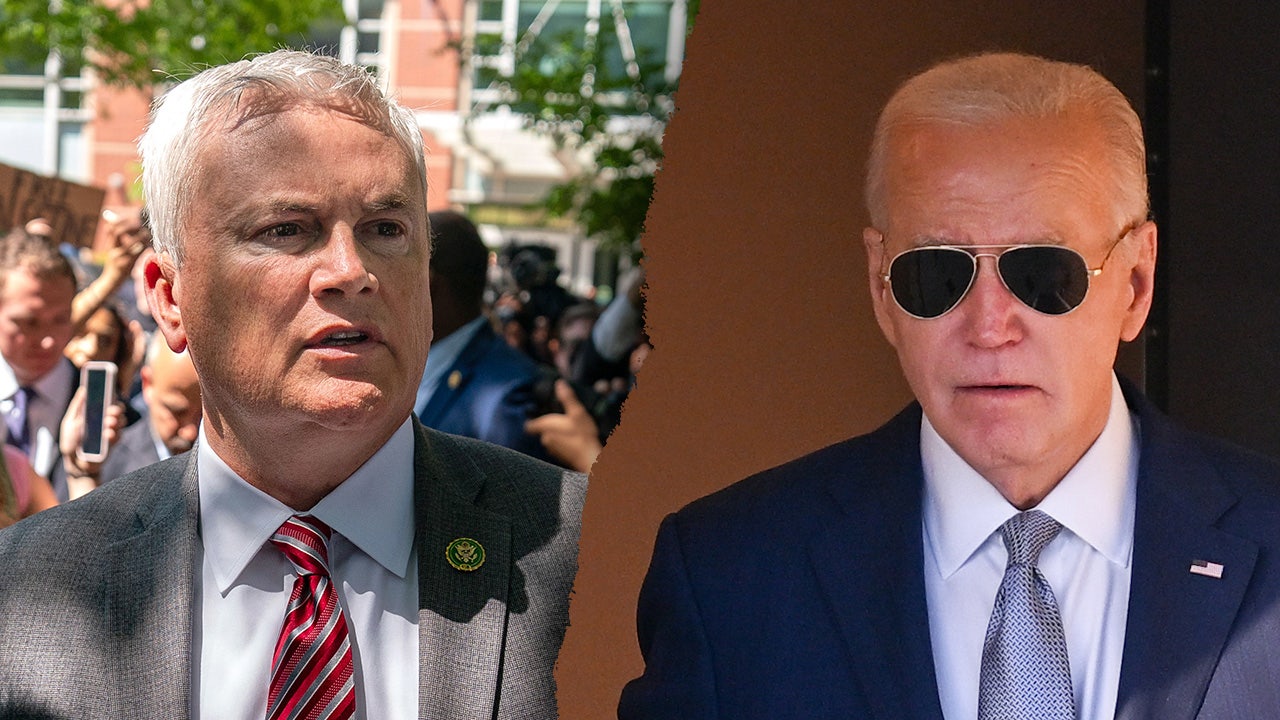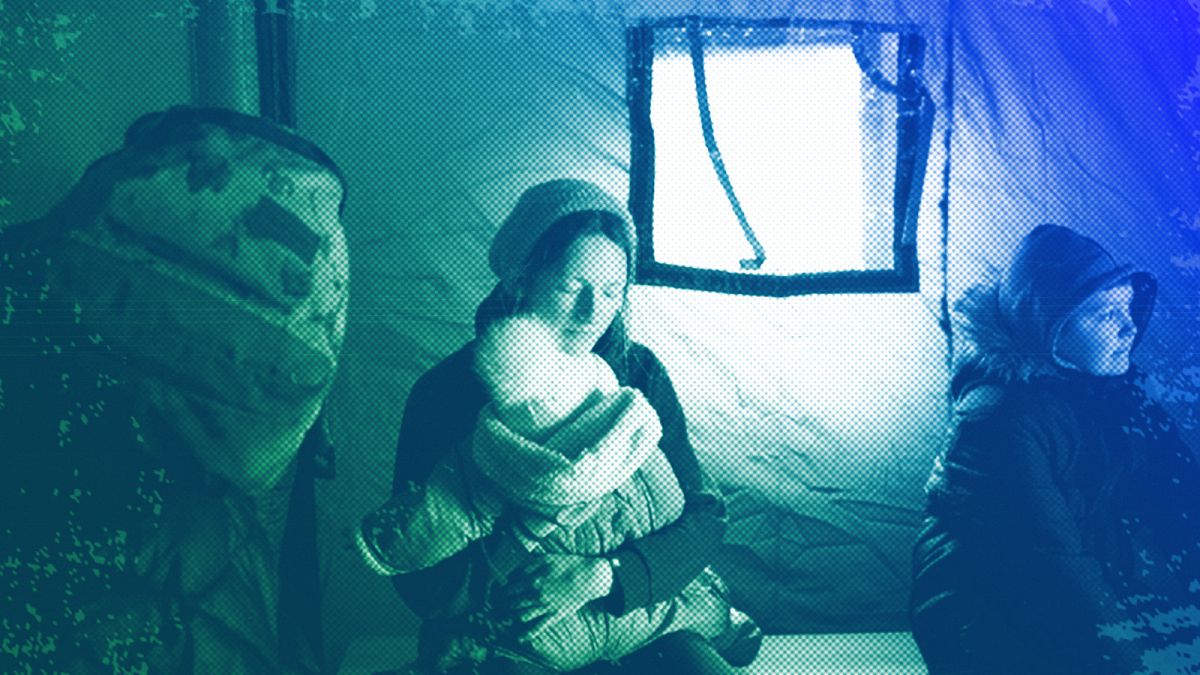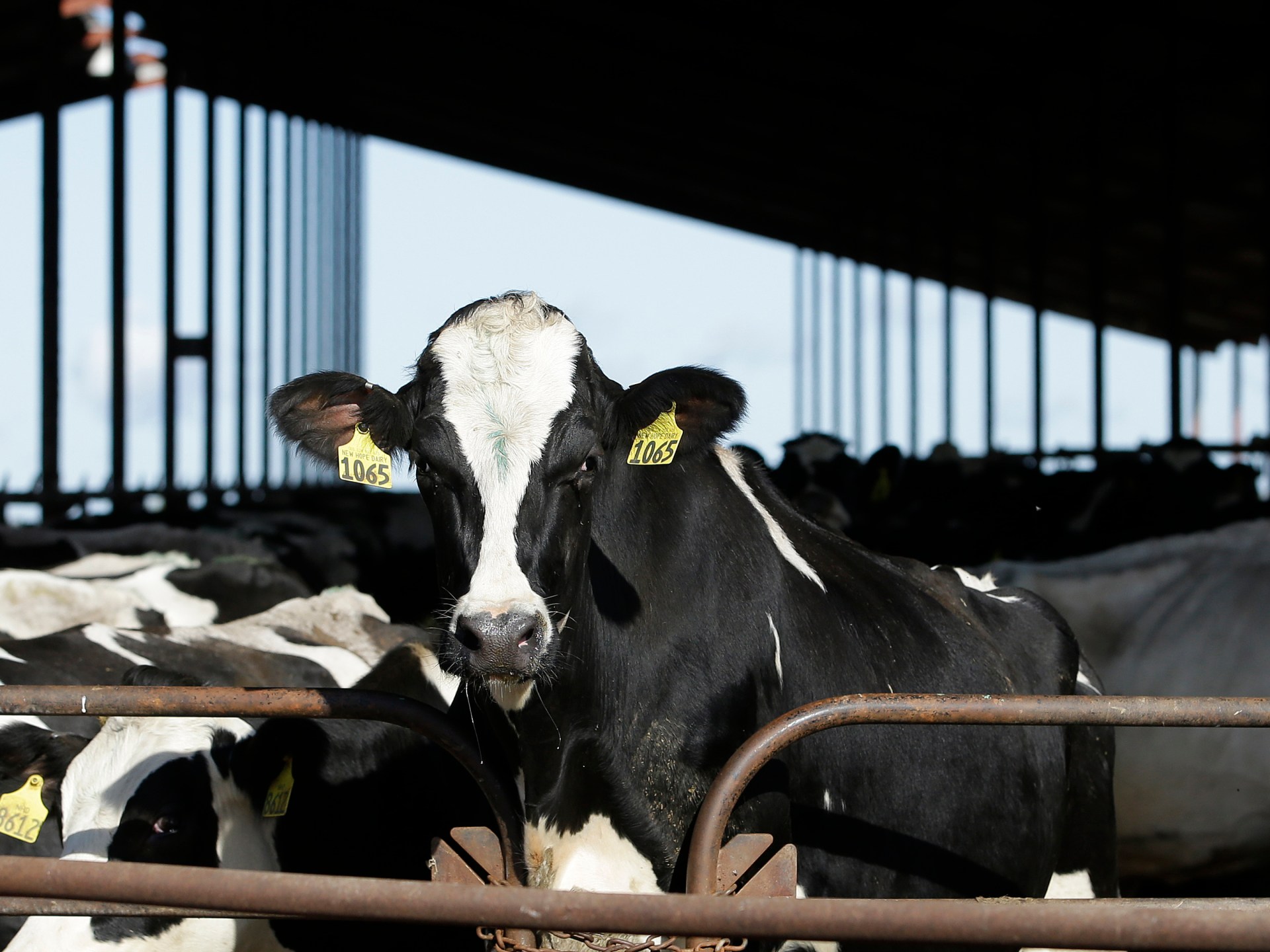Education
No Degree? No Problem. Biden Tries to Bridge the ‘Diploma Divide.’

When President Biden told a crowd of union workers this year that every American should have a path to a good career — “whether they go to college or not” — Tyler Wissman was listening.
A father of one with a high school education, Mr. Wissman said he rarely heard politicians say that people should be able to get ahead without a college degree.
“In my 31 years, it was always, ‘You gotta go to college if you want a job,’” said Mr. Wissman, who is training as an apprentice at the Finishing Trades Institute in Philadelphia, where the president spoke in March.
As Mr. Biden campaigns for re-election, he is trying to bridge an educational divide that is reshaping the American political landscape. Even though both political parties portray education as crucial for advancement and opportunity, college-educated voters are now more likely to identify as Democrats, while those without college degrees are more likely to support Republicans.
That increasingly clear split has enormous implications for Mr. Biden as he tries to expand the coalition of voters that sent him to the White House in the first place. In 2020, Mr. Biden won 61 percent of college graduates, but only 45 percent of voters without a four-year college degree — and just 33 percent of white voters without a four-year degree.
“The Democratic Party has become a cosmopolitan, college-educated party even though it’s a party that considers itself a party of working people,” said David Axelrod, a top adviser to former President Barack Obama.
Mr. Axelrod added that the perception that Wall Street had been bailed out during the 2008 recession while the middle class was left to struggle deepened the fissure between Democrats and blue-collar workers who did not attend college.
The election of Donald J. Trump, who harnessed many of those grievances for political gain, solidified the trend.
“There’s a sense among working-class voters, and not just white working-class voters, that the party doesn’t relate to them or looks down on people who work with their hands or work with their backs or do things that don’t require college education,” Mr. Axelrod said.
Now, in speeches around the country, Mr. Biden rarely speaks about his signature piece of legislation, a $1 trillion infrastructure bill, without also emphasizing that it will lead to trade apprenticeships and, ultimately, union jobs.
“Let’s offer every American a path to a good career whether they go to college or not, like the path you started here,” Mr. Biden said at the trades institute, referring to its apprenticeship program.
The White House says apprenticeship programs, which typically combine some classroom learning with paid on-the-job experience, are crucial to overcoming a tight labor market and ensuring that there is a sufficient work force to turn the president’s sprawling spending plan into roads, bridges and electric vehicle chargers.
Mr. Biden has offered incentives for creating apprenticeships, with hundreds of millions of dollars in federal grants for states that expand such programs.
“Biden is the first president that’s reducing the need to get a college degree since World War II,” said Douglas Brinkley, a presidential historian.
Mr. Biden’s approach is a shift from previous Democratic administrations, which were far more focused on college as a path to higher pay and advancement. Mr. Obama, during his first joint session of Congress, said that the United States should “once again have the highest proportion of college graduates in the world.”
Mr. Obama’s wife, Michelle Obama, started a campaign encouraging Americans to go to college, at one point suggesting in a satirical video that life without higher education was akin to watching painting dry.
Democrats have long walked a careful line on the issue. Mr. Biden has been a champion of higher education, particularly community colleges, and one of his most ambitious proposals as president was a $400 billion program to forgive student loan debt for 40 million Americans. Republicans have portrayed that proposal as a giveaway for elites.
Mitch Landrieu, the president’s infrastructure coordinator, said Mr. Biden had always believed college was important, but “it is absolutely not the only way to build an economy.”
“He sees that men and women like that have been left behind for a long time,” Mr. Landrieu said of people without college degrees. “They’ve always been part of the Democratic Party. It’s not until recently that’s changed.”
The shift coincides with a stark political reality.
The battleground states that voted for the winning candidate in both 2016 and 2020 rank roughly in the middle on higher-education levels, which means that Mr. Biden’s effort to appeal to those without a degree could make a real difference in 2024, according to Doug Sosnik, a former senior adviser to President Bill Clinton.
“You need to both try to mitigate losses with noncollege voters and at the same time try to exploit the advantage in those states with educated voters,” Mr. Sosnik said. “You can’t rely on the diploma divide solely to win. But it’s part of the formula.”
A similar dynamic is playing out nationwide.
Gov. Josh Shapiro, Democrat of Pennsylvania, released campaign ads focused on expanding apprenticeships and removing requirements for college degrees for thousands of state government jobs — a pledge he made good on when he entered office. Republicans in Maryland, Alaska and Utah have removed similar degree requirements.
Gov. Spencer Cox, Republican of Utah, said he was not only hoping to address a stigma attached to those who do not attend college but also appease employers increasingly anxious about persistent worker shortages.
“We can’t do any of this stuff if we don’t have a labor force,” Mr. Cox said.
Christopher Montague, 29, an Air Force veteran from the Philadelphia suburbs, who trained as an apprentice in drywall instead of going to college, said he had noticed an “awakening” by politicians on the upside of pursuing training in trades.
“There is money in working with your hands,” he said.
At the Finishing Trades Institute in Philadelphia, instructors say they have noticed an increase in demand. Drew Heverly, an industrial painting instructor, said he typically had 10 apprentices working on construction projects in “a good year.”
This year, he has already sent nearly 40 apprentices to work on projects in Philadelphia that are partially funded by Mr. Biden’s infrastructure package.
“We’ve definitely see the ramp-up and the need for manpower,” Mr. Heverly said.
The prospect of pursuing an education in trade while earning money on projects has also gained momentum among high school students, according to the Finishing Trades Institute’s recruitment coordinator, Tureka Dixon. Community colleges in the area are even reaching out to see if they can form joint partnerships to train students on trade.
“Whether it’s cranes, high-rise buildings, bridges, that is trade work,” Ms. Dixon said as the apprentices in hard hats listened to a lesson on lead removals. “That is physical labor. That is the country, so I think people need to consider it more.”
Mark Smith, 30, who is training as an apprentice at the institute, said learning a trade was not a fallback position for him — it was his preferred career.
“School wasn’t for me,” Mr. Smith said. “I did the Marine Corps and then I started right in this. For me it was a waste of money.”
Mr. Wissman, who has never voted in a presidential election and identifies as an independent, said he was not sure yet if the recognition from the White House would move him to finally vote in the 2024 election.
“I want in office whoever is going to help me put food on my table,” said Mr. Wissman, whose girlfriend is pregnant with their second child. “At the end of the day, that’s all it’s going to come down to.”

Education
Video: Police Use Pepper Spray on Protesters on G.W.U.’s Campus

new video loaded: Police Use Pepper Spray on Protesters on G.W.U.’s Campus
transcript
transcript
Police Use Pepper Spray on Protesters on G.W.U.’s Campus
Police officers arrested 33 pro-Palestinian protesters and cleared a tent encampment on the campus of George Washingon University.
-
“The Metropolitan Police Department. If you are currently on George Washington University property, you are in violation of D.C. Code 22-3302, unlawful entry on property.” “Back up, dude, back up. You’re going to get locked up tonight — back up.” “Free, free Palestine.” “What the [expletive] are you doing?” [expletives] “I can’t stop — [expletives].”
Recent episodes in Israel-Hamas War
Education
How Counterprotesters at U.C.L.A. Provoked Violence, Unchecked for Hours

A satellite image of the UCLA campus.
On Tuesday night, violence erupted at an encampment that pro-Palestinian protesters had set up on April 25.
The image is annotated to show the extent of the pro-Palestinian encampment, which takes up the width of the plaza between Powell Library and Royce Hall.
The clashes began after counterprotesters tried to dismantle the encampment’s barricade. Pro-Palestinian protesters rushed to rebuild it, and violence ensued.
Arrows denote pro-Israeli counterprotesters moving towards the barricade at the edge of the encampment. Arrows show pro-Palestinian counterprotesters moving up against the same barricade.
Police arrived hours later, but they did not intervene immediately.
An arrow denotes police arriving from the same direction as the counterprotesters and moving towards the barricade.
A New York Times examination of more than 100 videos from clashes at the University of California, Los Angeles, found that violence ebbed and flowed for nearly five hours, mostly with little or no police intervention. The violence had been instigated by dozens of people who are seen in videos counterprotesting the encampment.
The videos showed counterprotesters attacking students in the pro-Palestinian encampment for several hours, including beating them with sticks, using chemical sprays and launching fireworks as weapons. As of Friday, no arrests had been made in connection with the attack.
To build a timeline of the events that night, The Times analyzed two livestreams, along with social media videos captured by journalists and witnesses.
The melee began when a group of counterprotesters started tearing away metal barriers that had been in place to cordon off pro-Palestinian protesters. Hours earlier, U.C.L.A. officials had declared the encampment illegal.
Security personnel hired by the university are seen in yellow vests standing to the side throughout the incident. A university spokesperson declined to comment on the security staff’s response.
Mel Buer/The Real News Network
It is not clear how the counterprotest was organized or what allegiances people committing the violence had. The videos show many of the counterprotesters were wearing pro-Israel slogans on their clothing. Some counterprotesters blared music, including Israel’s national anthem, a Hebrew children’s song and “Harbu Darbu,” an Israeli song about the Israel Defense Forces’ campaign in Gaza.
As counterprotesters tossed away metal barricades, one of them was seen trying to strike a person near the encampment, and another threw a piece of wood into it — some of the first signs of violence.
Attacks on the encampment continued for nearly three hours before police arrived.
Counterprotesters shot fireworks toward the encampment at least six times, according to videos analyzed by The Times. One of them went off inside, causing protesters to scream. Another exploded at the edge of the encampment. One was thrown in the direction of a group of protesters who were carrying an injured person out of the encampment.
Mel Buer/The Real News Network
Some counterprotesters sprayed chemicals both into the encampment and directly at people’s faces.
Sean Beckner-Carmitchel via Reuters
At times, counterprotesters swarmed individuals — sometimes a group descended on a single person. They could be seen punching, kicking and attacking people with makeshift weapons, including sticks, traffic cones and wooden boards.
StringersHub via Associated Press, Sergio Olmos/Calmatters
In one video, protesters sheltering inside the encampment can be heard yelling, “Do not engage! Hold the line!”
In some instances, protesters in the encampment are seen fighting back, using chemical spray on counterprotesters trying to tear down barricades or swiping at them with sticks.
Except for a brief attempt to capture a loudspeaker used by counterprotesters, and water bottles being tossed out of the encampment, none of the videos analyzed by The Times show any clear instance of encampment protesters initiating confrontations with counterprotesters beyond defending the barricades.
Shortly before 1 a.m. — more than two hours after the violence erupted — a spokesperson with the mayor’s office posted a statement that said U.C.L.A officials had called the Los Angeles Police Department for help and they were responding “immediately.”
Officers from a separate law enforcement agency — the California Highway Patrol — began assembling nearby, at about 1:45 a.m. Riot police with the L.A.P.D. joined them a few minutes later. Counterprotesters applauded their arrival, chanting “U.S.A., U.S.A., U.S.A.!”
Just four minutes after the officers arrived, counterprotesters attacked a man standing dozens of feet from the officers.
Twenty minutes after police arrive, a video shows a counterprotester spraying a chemical toward the encampment during a scuffle over a metal barricade. Another counterprotester can be seen punching someone in the head near the encampment after swinging a plank at barricades.
Fifteen minutes later, while those in the encampment chanted “Free, free Palestine,” counterprotesters organized a rush toward the barricades. During the rush, a counterprotester pulls away a metal barricade from a woman, yelling “You stand no chance, old lady.”
Throughout the intermittent violence, officers were captured on video standing about 300 feet away from the area for roughly an hour, without stepping in.
It was not until 2:42 a.m. that officers began to move toward the encampment, after which counterprotesters dispersed and the night’s violence between the two camps mostly subsided.
The L.A.P.D. and the California Highway Patrol did not answer questions from The Times about their responses on Tuesday night, deferring to U.C.L.A.
While declining to answer specific questions, a university spokesperson provided a statement to The Times from Mary Osako, U.C.L.A.’s vice chancellor of strategic communications: “We are carefully examining our security processes from that night and are grateful to U.C. President Michael Drake for also calling for an investigation. We are grateful that the fire department and medical personnel were on the scene that night.”
L.A.P.D. officers were seen putting on protective gear and walking toward the barricade around 2:50 a.m. They stood in between the encampment and the counterprotest group, and the counterprotesters began dispersing.
While police continued to stand outside the encampment, a video filmed at 3:32 a.m. shows a man who was walking away from the scene being attacked by a counterprotester, then dragged and pummeled by others. An editor at the U.C.L.A. student newspaper, the Daily Bruin, told The Times the man was a journalist at the paper, and that they were walking with other student journalists who had been covering the violence. The editor said she had also been punched and sprayed in the eyes with a chemical.
On Wednesday, U.C.L.A.’s chancellor, Gene Block, issued a statement calling the actions by “instigators” who attacked the encampment unacceptable. A spokesperson for California Gov. Gavin Newsom criticized campus law enforcement’s delayed response and said it demands answers.
Los Angeles Jewish and Muslim organizations also condemned the attacks. Hussam Ayloush, the director of the Greater Los Angeles Area office of the Council on American-Islamic Relations, called on the California attorney general to investigate the lack of police response. The Jewish Federation Los Angeles blamed U.C.L.A. officials for creating an unsafe environment over months and said the officials had “been systemically slow to respond when law enforcement is desperately needed.”
Fifteen people were reportedly injured in the attack, according to a letter sent by the president of the University of California system to the board of regents.
The night after the attack began, law enforcement warned pro-Palestinian demonstrators to leave the encampment or be arrested. By early Thursday morning, police had dismantled the encampment and arrested more than 200 people from the encampment.
Education
Video: President Biden Addresses Campus Protests

new video loaded: President Biden Addresses Campus Protests
transcript
transcript
President Biden Addresses Campus Protests
President Biden defended the right of demonstrators to protest peacefully, but condemned the “chaos” that has prevailed at many colleges nationwide.
-
Violent protest is not protected. Peaceful protest is. It’s against the law when violence occurs. Destroying property is not a peaceful protest. It’s against the law. Vandalism, trespassing, breaking windows, shutting down campuses, forcing the cancellation of classes and graduations — none of this is a peaceful protest. Threatening people, intimidating people, instilling fear in people is not peaceful protest. It’s against the law. Dissent is essential to democracy, but dissent must never lead to disorder or to denying the rights of others, so students can finish the semester and their college education. There’s the right to protest, but not the right to cause chaos. People have the right to get an education, the right to get a degree, the right to walk across the campus safely without fear of being attacked. But let’s be clear about this as well. There should be no place on any campus — no place in America — for antisemitism or threats of violence against Jewish students. There is no place for hate speech or violence of any kind, whether it’s antisemitism, Islamophobia or discrimination against Arab Americans or Palestinian Americans. It’s simply wrong. There’s no place for racism in America.
Recent episodes in Politics
-

 Politics1 week ago
Politics1 week agoThe White House has a new curator. Donna Hayashi Smith is the first Asian American to hold the post
-

 Politics1 week ago
Politics1 week agoAdams, NYPD cite 'global' effort to 'radicalize young people' after 300 arrested at Columbia, CUNY
-

 World1 week ago
World1 week agoTurkish police arrest hundreds at Istanbul May Day protests
-

 News1 week ago
News1 week agoPolice enter UCLA anti-war encampment; Arizona repeals Civil War-era abortion ban
-

 News1 week ago
News1 week agoVideo: Police Arrest Columbia Protesters Occupying Hamilton Hall
-

 News1 week ago
News1 week agoSome Republicans expected to join Arizona Democrats to pass repeal of 1864 abortion ban
-
)
) Movie Reviews1 week ago
Movie Reviews1 week agoThe Idea of You Movie Review: Anne Hathaway’s honest performance makes the film stand out in a not so formulaic rom-com
-

 Politics1 week ago
Politics1 week agoNewsom, state officials silent on anti-Israel protests at UCLA
